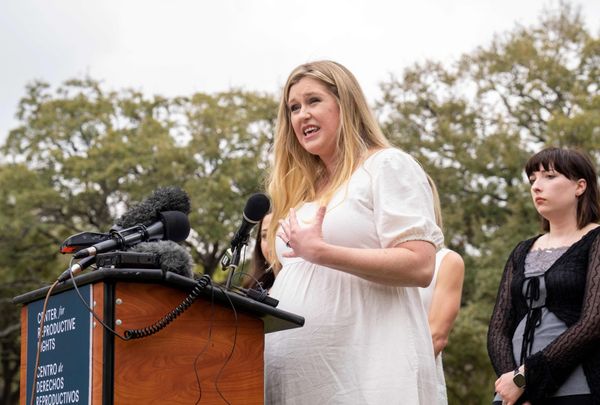
Reduce, reuse, repair, recycle or return to the earth – together these five sustainability principles are the keys to building a “circular” business.
Historically, fashion brands’ responsibility for their products ended once the clothing left the shop, resulting in ever-increasing mountains of textile waste. However this system is changing due to pressure from both regulators (particularly in the EU) and consumers.
More fashion brands now offer customers extended care, including free or cheap repair programs and take-back schemes to ensure clothing does not end up in landfill at the end of its life.
But this model of circularity requires a business to have an ongoing presence, something that can never be guaranteed in a notoriously difficult industry like fashion.
So when a brand that has promised to care for garments throughout their lifetime shuts down, what happens next? Courtney Holm is contemplating this question right now. For seven years, the designer of A.BCH made clothing with circularity principles in mind, offering free repairs, alongside a take-back scheme for recycling. The brand picked up several awards, including an Australian fashion laureate, for its sustainability credentials.
Then on 19 January, the Melbourne-based label announced the business would no longer make and sell new garments from March onwards.
Holm says the brand is undergoing a strategic transition and will continue to exist as a consultancy and educational tool. Here, Holm explains how she intends to remain responsible for A.BCH garments after the business stops making new clothes. Her plans may well form an exit template for other circular businesses that follow.
Repair
A free repair service was the heart of A.BCH’s circular offering. Since Holm is not giving up A.BCH’s factory in West Melbourne and is working on turning it into a community space for small-scale manufacturing, for the moment they will continue to provide customers with repairs on all existing A.BCH garments.
Obviously there’s a chance the factory might close in the future. In that case, she says: “We will basically use the website to direct people where to go for repairs.”

Rental
A small number of A.BCH garments were available for rent via the platform Rntr. These will be sent back to A.BCH. “It’ll be less than 10 garments that come back to us, so it’s not going to be a big deal,” says Holm. Depending on the condition of the garments, they will either be sold as preloved through the A.BCH website or recycled.
Recycling
Textile recycling is notoriously difficult, but since Holm has been designing with its limitations in mind, A.BCH’s garments are compatible with available recycling technology.
As Australia has no dedicated waste stream for textiles, garments have to be returned to A.BCH so that Holm can ensure they reach a facility capable of recycling them. Holm says she will continue to offer this service to A.BCH clients. There are no textile-to-textile recycling facilities in Australia, so Holm has partnered with a factory in Turkey that turns offcuts and shredded garments into yarn.
Currently, textile-to-textile recycling works best when garments are made of a single material, for example 100% cotton (currently the only material being recycled back into textiles at commercial scale). Mechanical recycling involves shredding garments and respinning them, so the colour of the material is also relevant. When customers send their worn garments back to A.BCH they are sorted by colour and fibre type then cut into shreds. Any hardware including buttons or zips are removed.
Shipments are sent when enough volume has amassed to make it worthwhile. Holm acknowledges it is not ideal to send garment waste so far away for processing and is hopeful eventually there will be a similar machine in Australia. This is something she intends to explore in her new role as a consultant and circularity advocate.
Return to earth
The final pillar of circularity is the idea that garments should be designed to safely biodegrade into the soil. For this to happen, garments have to be made of natural or cellulose-based fibres and not treated with toxic chemicals or dyes. Any synthetic elastics or stitching must be removed, along with any buttons and zips.

“When we started the garments were made to be recycled or composted,” says Holm. She says that “if the brand no longer sold clothes one day” they always intended to keep instructions for the circularity of each garment available for customers to access.
Holm has always been radically transparent about the materials used in her garments, which makes the transition easier. “We have all the data from day dot,” she says. When the A.BCH website relaunches, she says customers will be able to search their product’s code to find out how to dispose of it safely at end of life. “We’ll also have general guides available, repair instructions and resale suggestions,” she says.
“We’ve designed everything so you could very easily, for example, take an elastic waistband out and then throw it in the compost bin,” Holm says.
“We can keep a website up with all the information and it’s still going to be used as an educational tool. My hope is that it’s not just going to die. It will be something that people continue to use.”







